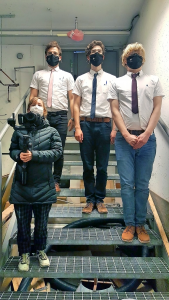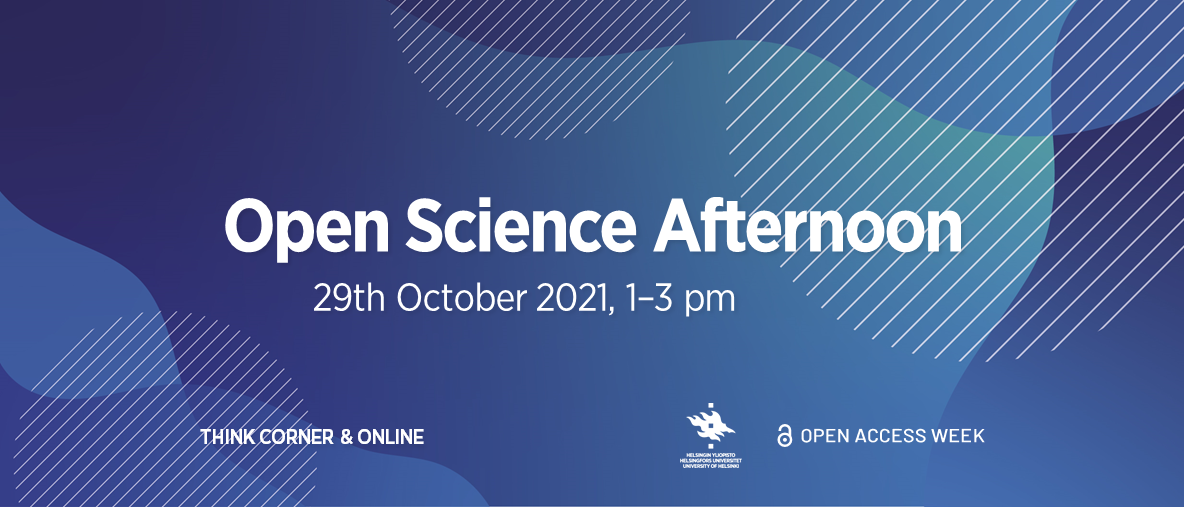”To maintain faith in scientific institutions, our data needs to be available for public and journalistic scrutiny”, says researcher Ivo Neefjes (University of Helsinki). In this interview, he stresses the need to make research data accessible for other researchers with sufficient metadata. Neefjes is attending the event ”Open Science Afternoon 2021 – Open Data Matters” where he is presenting Molecular Clusters video, that won Science journal’s Dance Your PhD competition in the spring.

Ivo Neefjes (TUHAT) works as a doctoral researcher at the University of Helsinki, Institute for Atmospheric and Earth System Research (INAR). He is participating the event ”Open Science Afternoon 2021 – Open Data Matters” which takes place on Friday, October 29, 2021 at Think Corner and online.
At the ”Open Data Matters” event, Neefjes will present Molecular Clusters music/dance video made together with his research colleagues Jakub Kubečka (TUHAT, ORCID) and Vitus Besel (TUHAT). The award-winning video has been shown in various TV programs, video podcasts and online conferences, but it will get its on-site premiere at Think Corner.
Ivo Neefjes, could you tell shortly about yourself and your work related to open data?
”I am a PhD student at the computational aerosol physics group of the University of Helsinki. Aerosol particles are important to study, as they cause adverse health effects upon inhalation and affect our climate through the reflection of solar radiation. A large portion of aerosol particles is formed in the atmosphere through the clustering of atmospheric molecules. Unfortunately, there is a big gap in knowledge on how this clustering process exactly occurs. In our group, we use computational methods to model this very beginning of the aerosol particle formation.”

”I was invited to the Open Science week after winning the Dance Your PhD competition with a dance/music video, that I made together with two colleagues, Jakub Kubečka and Vitus Besel. For us, open science doesn’t only mean the sharing of knowledge and data between scientist, but also with the general public. By creating a dance/music video about the formation of aerosol particles in the atmosphere, we hope to make our research accessible for a broad audience.”
For us, open science doesn’t only mean the sharing of knowledge and data between scientist, but also with the general public. By creating a dance/music video about the formation of aerosol particles in the atmosphere, we hope to make our research accessible for a broad audience.
What do you see as the greatest benefit of opening research data?
”For me, the biggest benefit of opening research data is transparency and accessibility towards the general public. In a closed data system, scientists can recommend policies based on data only they have seen. This lack of transparency creates a distrust towards scientists. As we have seen with Covid and climate change denialism, this can lead to disastrous results. To maintain faith in scientific institutions, our data needs to be available for public and journalistic scrutiny.”
If you would have one wish that would advance opening data (regardless of costs), what would it be?
”In scientific fields, such as climate science, a huge amount of data is generated every day and over time made available as open data. As an outsider, who was not involved in obtaining this data, it can be extremely difficult to interpret the data. Besides availability of open data, we should therefore also have accessibility of open data. By this I mean that all open data should be accompanied by a straightforward instruction manual, explaining in detail how the data was obtained, how complete it is and the reason behind possible gaps in the data.”
Besides availability of open data, we should therefore also have accessibility of open data. By this I mean that all open data should be accompanied by a straightforward instruction manual, explaining in detail how the data was obtained, how complete it is and the reason behind possible gaps in the data.


